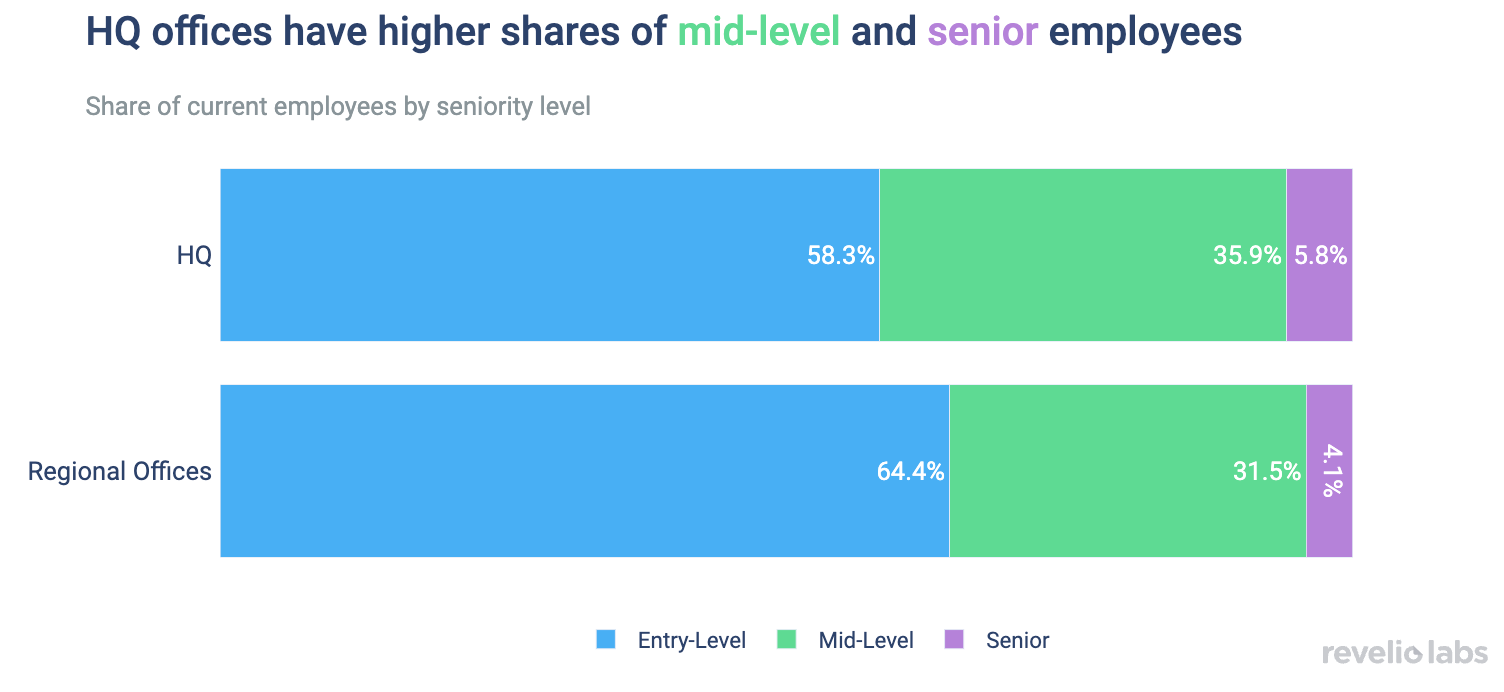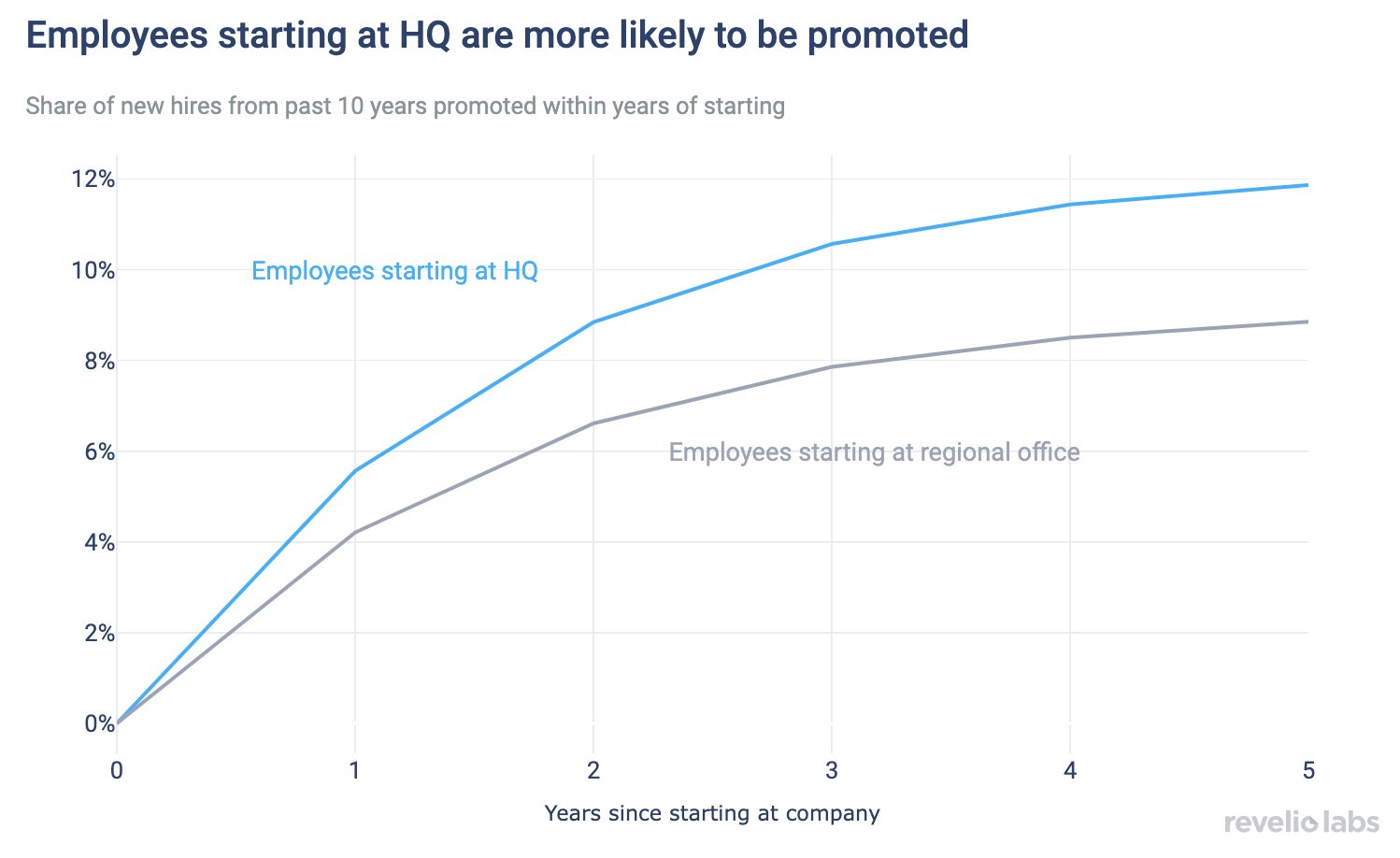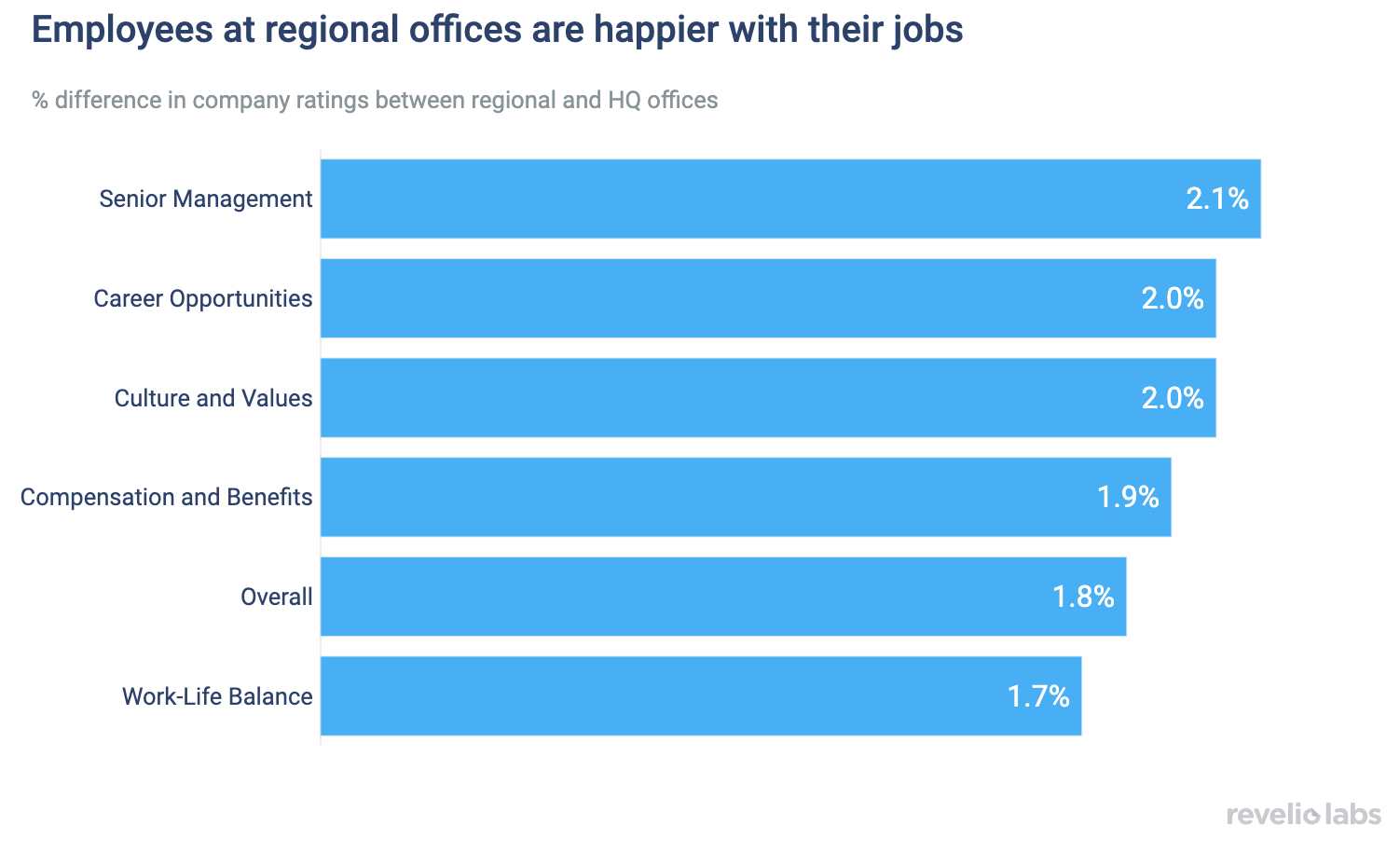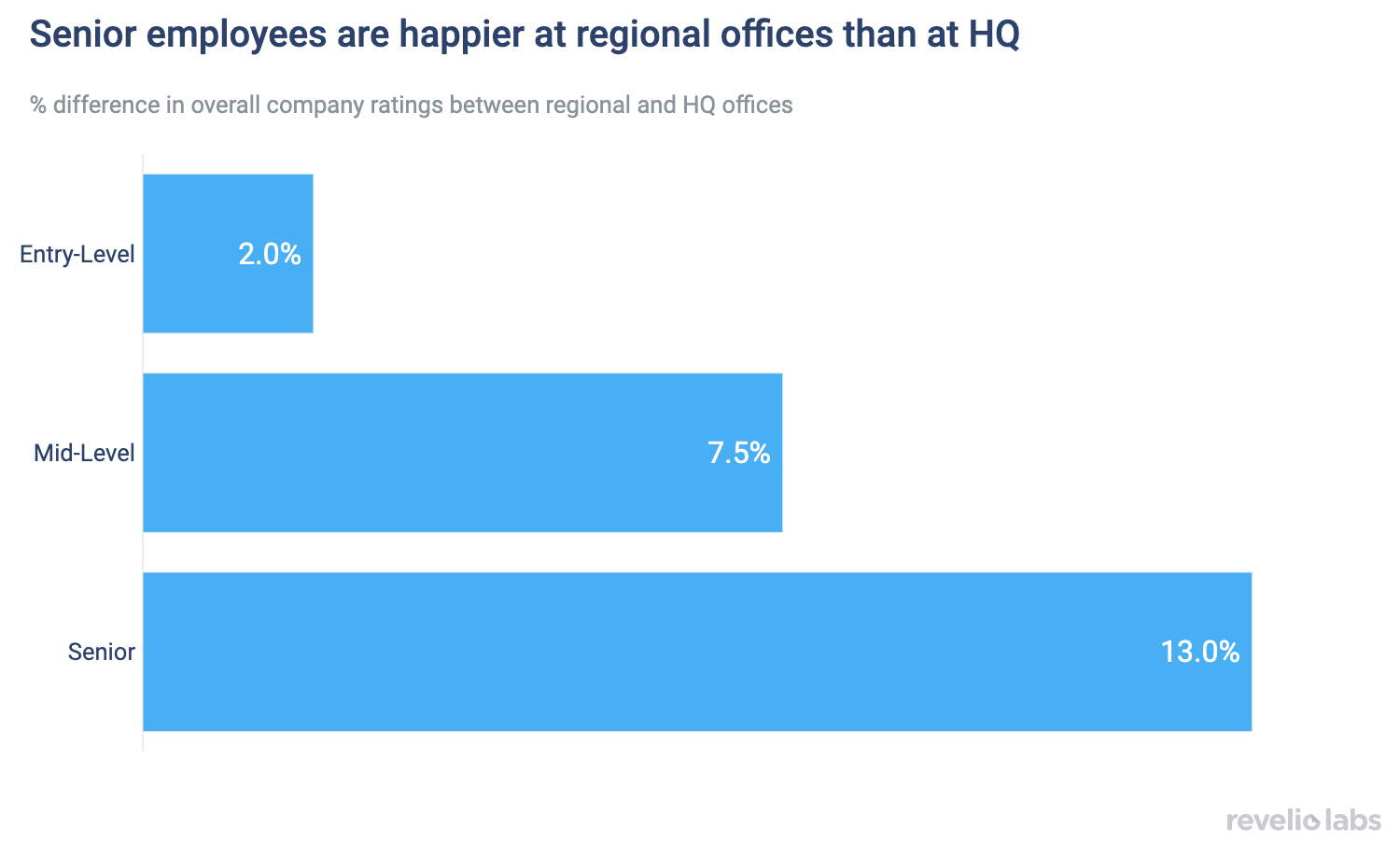The Fast Track to Promotion Starts at HQ. To Happiness, Elsewhere.
You may just want to stay in Scranton

Headquarters offices are more top-heavy than branch offices: HQ offices have a higher share of mid-level employees and senior executives, while regional offices have a higher share of entry-level employees.
HQ offices provide more room to grow: Employees who start their careers at a company’s HQ office are more likely to get promoted within 5 years relative to those who start at branch offices.
Employees at branch offices seem to be happier than those at the main office, especially senior employees — perhaps they prefer to be a “big fish in a small pond.”
Even within the same company, office environments and regional differences can play a crucial role in shaping employee experience and professional development. In particular, the environments at headquarters (HQ) and regional offices can differ significantly, each offering distinct opportunities and challenges. Employees facing a decision on whether to take a position at an HQ office or a regional office may take several factors into consideration. For example, positions at HQ may offer opportunities for rapid advancement and networking with senior leadership. On the other hand, positions at regional offices may be better suited for those who thrive in environments with greater independence and a more direct connection with customers. This week, we dive into our workforce data to explore how career opportunities and employee morale change across these office types.
We focus our analysis on Russell 3000 companies in the US and define whether an employee works at headquarters or at a regional office by comparing the employee’s position location to that of the company’s HQ. First, we look at the composition of each office type’s workforce. Unsurprisingly, we find that headquarters offices have higher shares of mid-level and senior employees. More than 40% of employees at HQ are at a manager level or above, compared to around 35% of employees at regional offices, reflecting the strategic responsibilities of the HQ office. This suggests that working at headquarters may lead to more opportunities for advancement, offering the potential for involvement in high-impact projects and increased interaction with senior executives.


Sign up for our newsletter
Our weekly data driven newsletter provides in-depth analysis of workforce trends and news, delivered straight to your inbox!
Indeed, our workforce data shows that there is a career advantage to starting at HQ. Among employees who joined a Russell 3000 company in the past 10 years, 12% of those who started their tenure at a company’s HQ got promoted within 5 years of joining. On the other hand, less than 9% of those who started at a regional office got promoted within the same timeframe. This means that HQ-based employees are 1.25 times more likely to be promoted than their colleagues at a regional office.


While a career at HQ seems to be a great fit for those looking to grow quickly, there can be advantages to working at regional offices as well. Regional offices may offer greater independence and autonomy, with a more flexible and dynamic work culture. They can also provide opportunities for hands-on experience, such as working more closely with local customers, especially for those in client-facing roles. Perhaps reflecting these differences in work environment, employees at regional offices seem to be happier with their jobs: Our employee sentiment data shows that those based at regional offices rate their companies higher across the board relative to their colleagues at headquarters, with the biggest difference concerning the rating of Senior Management.


Interestingly, more senior employees seem to be driving these differences in employee sentiment: While employer ratings by entry-level employees are relatively similar across both HQ and regional offices, employees in middle management at regional offices rate their employers 7.5% higher than their counterparts at HQ. The gap grows further for senior executives at regional offices, who rate their employers 13% higher than their HQ colleagues. This suggests that management, in particular, may enjoy the increased autonomy offered at regional offices, where they can develop their leadership skills and have a more direct impact on decision-making. They may also be more partial to locations with less office politics or supervision from the C-suite. That is, these employees may prefer to be the big fish in a smaller pond.




